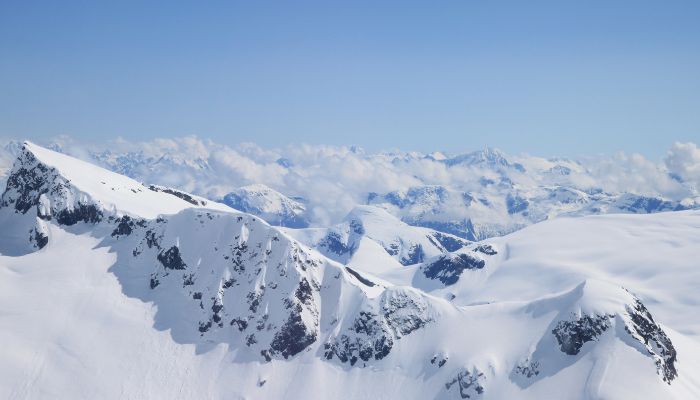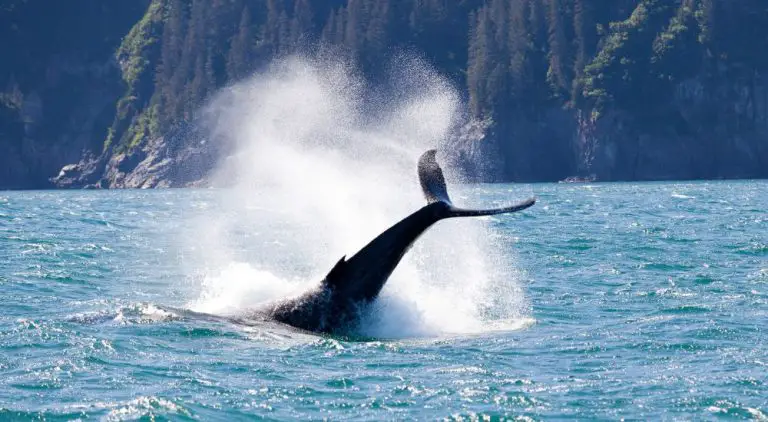Why Is Alaska So Cold? Explaining the Arctic Climate of America’s Northernmost State
Alaska is known for its frigid temperatures, with some of the coldest weather in the United States. The state is located in the northernmost part of the country, and its climate is heavily influenced by its proximity to the Arctic Circle. The cold temperatures in Alaska are due to a combination of factors, including its high latitude, its location near the Arctic Ocean, and the presence of ice and snow.

The temperature in Alaska can vary greatly depending on the season and location. In the winter, temperatures can drop to below -50°F, while in the summer, temperatures can reach into the 90s°F. The cold temperatures in Alaska are due to its location near the North Pole, which means that the sun’s rays hit the region at a low angle, resulting in less heat being absorbed by the Earth’s surface. Additionally, the Arctic Ocean, which surrounds Alaska, is covered in ice for much of the year, which helps to keep the region cool.
Geographical Influences on Alaska’s Climate

Alaska is known for its frigid temperatures, but what causes this extreme climate? The state’s location and geography play a significant role in shaping its climate. In this section, we will explore the impact of the Bering Sea and Arctic Ocean, as well as the role of the Brooks Range and North Slope.
Impact of the Bering Sea and Arctic Ocean
The Bering Sea and Arctic Ocean are critical factors in determining Alaska’s climate. The cold water from these bodies of water cools the air that passes over them, resulting in the chilly temperatures that Alaska is known for. Additionally, the ocean currents that flow through these bodies of water play a role in regulating the temperature of the surrounding land masses.
Role of the Brooks Range and North Slope
The Brooks Range and North Slope are two prominent features of Alaska’s geography that significantly impact its climate. The Brooks Range acts as a barrier, preventing warm air from the south from reaching the northern parts of the state. As a result, the region experiences colder temperatures than other parts of Alaska. The North Slope, on the other hand, is a vast expanse of tundra that experiences long, cold winters and short, cool summers.
Overall, Alaska’s climate is heavily influenced by its geography. The Bering Sea and Arctic Ocean, as well as the Brooks Range and North Slope, are just a few examples of the many factors that contribute to the state’s frigid temperatures.
Meteorological Factors Affecting Alaskan Weather

The climate of Alaska is heavily influenced by meteorological factors that affect temperature and precipitation variability. These factors include global weather patterns, local atmospheric conditions, and oceanic currents. Understanding these factors is crucial for predicting Alaskan weather patterns and their potential impact on the state.
Variability in Temperature and Precipitation
Alaska is known for its cold climate, with long and harsh winters. The state’s location at high latitudes and its proximity to the Arctic Ocean contribute to its cold temperatures. During the winter, the state experiences long periods of darkness, which further exacerbates the cold. The state’s interior is particularly cold, with temperatures dropping to -60°F (-51°C) during the coldest months.
Despite the cold temperatures, Alaska experiences significant variability in temperature and precipitation. The state’s coastal regions receive more precipitation than its interior, with annual rainfall ranging from 10 to 200 inches (25 to 500 cm). The state’s interior is much drier, with annual precipitation ranging from 5 to 20 inches (13 to 50 cm).
Influence of Global Weather Patterns
Alaska’s weather is also influenced by global weather patterns, such as El Niño and La Niña, as well as the Pacific Decadal Oscillation (PDO). El Niño and La Niña are periodic changes in oceanic and atmospheric conditions in the tropical Pacific Ocean. These changes can influence weather patterns around the world, including in Alaska.
The PDO is a long-term pattern of oceanic and atmospheric changes in the North Pacific that can last for decades. It can affect the frequency and intensity of storms in Alaska, as well as the state’s temperature and precipitation patterns.
Climate researchers, such as Brian Brettschneider, use dynamic models to predict the impact of these global weather patterns on Alaska’s weather. The National Weather Service also closely monitors these patterns to provide accurate weather predictions for the state.
In summary, a combination of local atmospheric conditions, oceanic currents, and global weather patterns contribute to the variability in temperature and precipitation in Alaska. By understanding these factors, researchers and meteorologists can better predict Alaskan weather patterns and their potential impact on the state.
Frequently Asked Questions

What factors contribute to Alaska’s low temperatures?
Alaska’s low temperatures are largely due to its high latitude and subarctic climate. The state is located far north of the equator, which means it receives less direct sunlight and has longer periods of darkness. Additionally, Alaska’s climate is influenced by cold air masses that move down from the Arctic and the North Pacific. These factors combine to create a climate that is colder than most other regions.
How does Alaska’s climate compare to other cold regions?
Alaska’s climate is unique in that it is both colder and drier than most other cold regions. While places like Siberia and northern Canada have similar temperatures, they often receive more precipitation than Alaska. This is due to Alaska’s location on the edge of the Arctic Ocean, which limits the amount of moisture that can be carried inland.
What are the coldest months in Alaska?
The coldest months in Alaska are typically December, January, and February. During these months, temperatures can drop to well below freezing, with some areas experiencing temperatures as low as -50°F. However, it’s worth noting that temperatures can vary widely across the state, with coastal areas generally being milder than inland areas.
How do Alaska’s geographical features influence its climate?
Alaska’s geographical features have a significant impact on its climate. The state’s mountain ranges, for example, can block warm air masses from moving inland, which can keep temperatures low. Additionally, Alaska’s proximity to the Arctic Ocean means that it is subject to sea ice and other oceanic influences. These factors combine to create a climate that is colder and drier than most other regions.
What is the average winter temperature in Alaska?
The average winter temperature in Alaska varies widely depending on the region. In general, coastal areas tend to be milder than inland areas. However, during the coldest months of the year, temperatures can drop to well below freezing across the state. The average winter temperature in Anchorage, for example, is around 20°F, while the average winter temperature in Fairbanks is around -10°F.
How has Alaska’s climate changed over recent years?
Alaska’s climate has been changing rapidly over recent years. The state has experienced record-breaking temperatures, shrinking glaciers, and melting permafrost. These changes are largely due to global warming, which is causing temperatures to rise across the planet. While Alaska has always had a cold climate, these changes are making the state even colder in some areas and are having a profound impact on the environment and wildlife.






